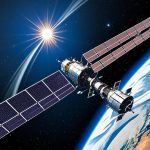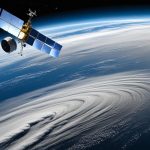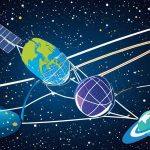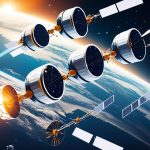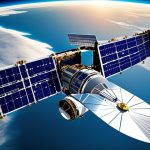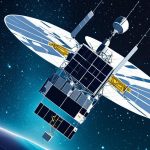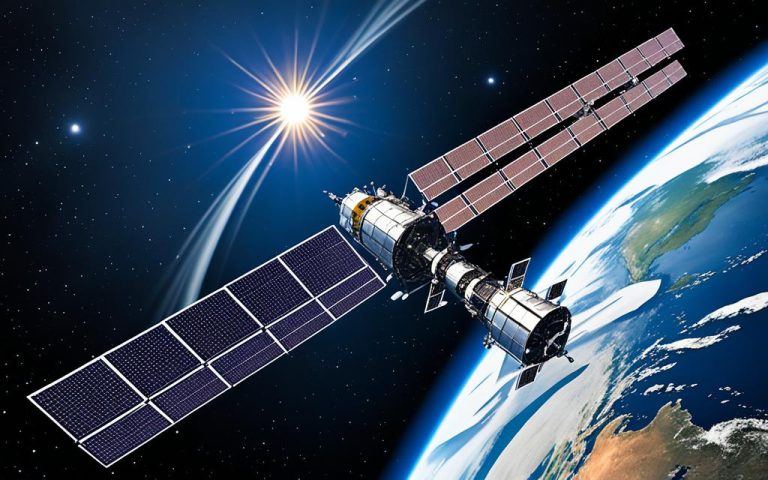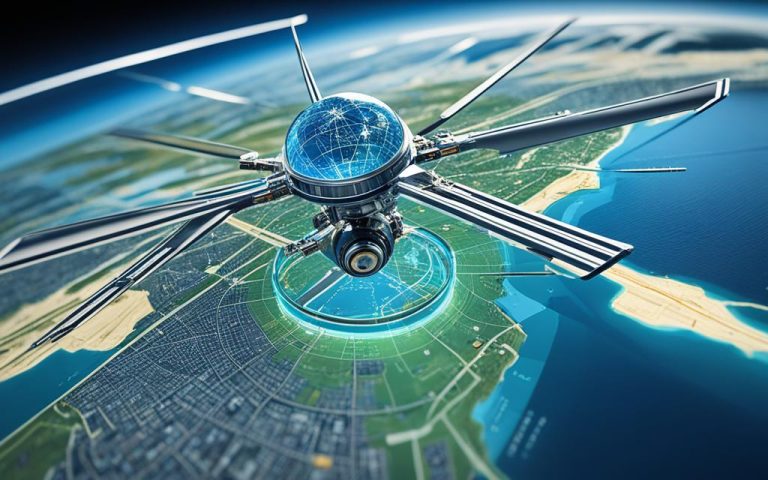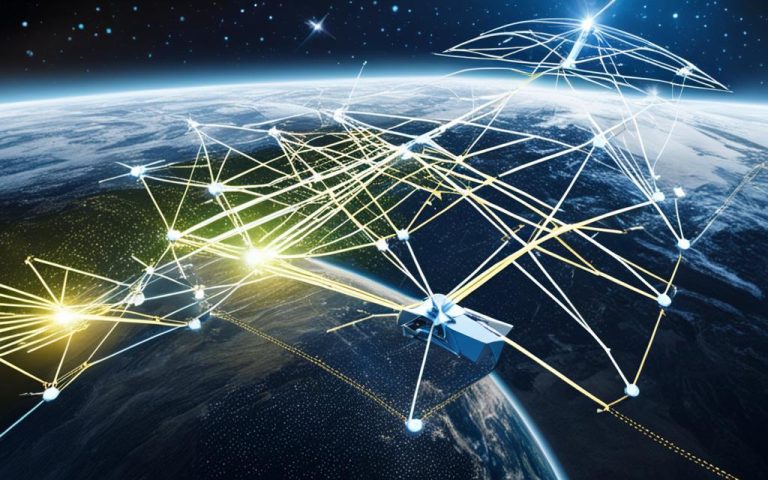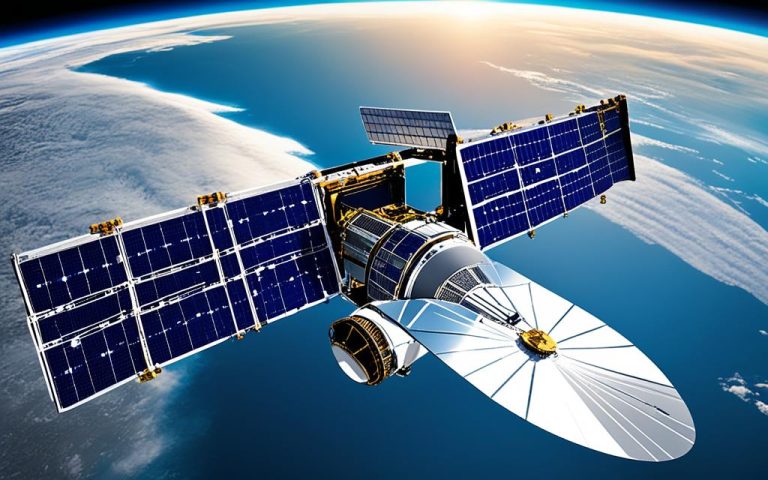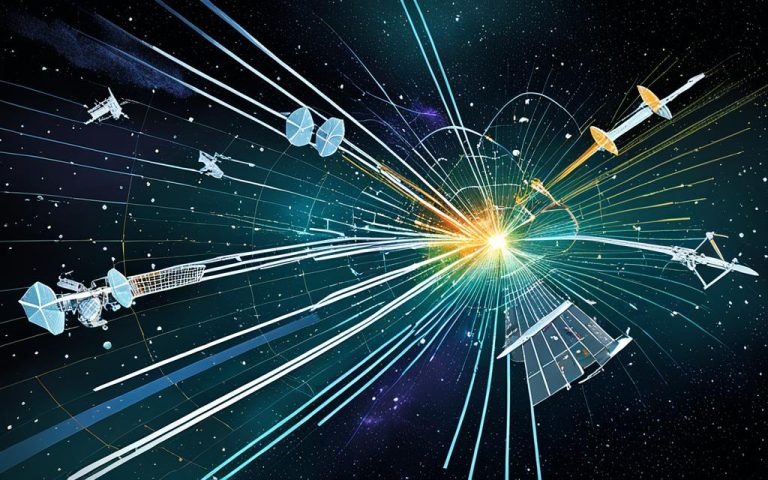Earth’s orbit is increasingly cluttered with space debris, posing a significant hazard to satellite networks. Launch rates have surged in recent years, leading to a higher density of debris objects in orbit. To address this issue, the European Space Agency (ESA) has adopted a “Zero Debris approach” and implemented stricter guidelines for disposing of space objects. These guidelines aim to ensure the safe disposal of satellites, improve orbital clearance, avoid in-orbit collisions, prevent intentional release of debris, and minimize the impact on astronomy. ESA’s efforts are part of a global initiative to achieve a Zero Debris future.
Read on to learn more about the impact of space debris on satellite networks, current mitigation strategies, NASA’s efforts, evaluating and mitigating the effects of large satellite constellations, the need for collaborative international efforts, and the importance of maintaining orbital sustainability.
The Impact of Space Debris on Satellite Networks
Space debris poses a significant impact on satellite networks. With millions of debris objects in low Earth orbit, there is a heightened risk of collisions that can damage or destroy satellites. This can result in disruptions to satellite functionality, affecting crucial services such as telecommunications, weather forecasting, and navigation systems. Space debris impact can have severe consequences on the reliability and performance of satellite networks, posing a significant challenge for orbital sustainability.
One of the primary concerns regarding space debris impact is the collision risk it poses to satellites. The debris travels at high velocities, and even the smallest fragments can cause catastrophic damage upon impact. The collision risk threatens the functionality of satellites and can render them completely inoperable. As a result, satellite networks may experience interruptions in service, impacting various industries and sectors that rely on satellite communications and data.
Furthermore, the increasing volume of space debris exacerbates the risk and raises additional concerns for satellite networks. As more objects accumulate in low Earth orbit, the likelihood of collisions multiplies, increasing the potential for further damage to satellites. This not only impacts their functionality on an individual basis but also compromises the overall sustainability of space-based applications and services.
The Importance of Protecting Satellite Functionality
Satellites play a vital role in our modern world, supporting numerous critical functions. These include but are not limited to:
- Telecommunications: Satellites enable global communication networks, facilitating long-distance calls, internet access, and data transfer.
- Weather Forecasting: Satellites provide invaluable data for weather prediction models, allowing meteorologists to monitor and analyze weather patterns accurately.
- Navigation Systems: Satellite-based navigation systems such as GPS are essential for accurate positioning, navigation, and timing in various industries, including aviation, maritime, and transportation.
Any disruption to satellite functionality caused by space debris impact can have far-reaching consequences, affecting these crucial services and putting lives and livelihoods at risk. It highlights the urgent need to implement effective measures to mitigate the risks posed by space debris and safeguard the functionality of satellite networks.
As we continue to rely on satellite networks for an increasing number of applications, it becomes imperative to confront the challenges posed by space debris. The next section will explore the current mitigation strategies employed to address the risks and ensure the long-term sustainability of satellite networks.
Current Mitigation Strategies for Space Debris
To mitigate the impact of space debris on satellite networks, various strategies have been developed. These strategies aim to minimize the generation of additional debris, improve orbital clearance, and maintain orbital sustainability. The following are some of the key strategies:
- Successful Disposal of Space Objects: Ensuring the successful disposal of space objects is crucial in space debris mitigation. This can be achieved through atmospheric reentry or reorbiting to a safe altitude, away from operational satellites and frequently used orbits.
- Improvement of Orbital Clearance: Reducing the time spent in protected low Earth orbits is essential for improving orbital clearance. By implementing efficient propulsion systems and mission planning, satellites can be moved to higher orbits at the end of their operational life, minimizing the risk of collisions.
- Collision Avoidance Techniques: Collision avoidance is a critical aspect of space debris mitigation. Satellites are equipped with advanced tracking systems that enable them to detect and avoid potential collisions with space debris. This includes maneuvering to different orbits or altering their trajectories to ensure safe passage.
- Preventing Intentional Release of Debris: To further mitigate the impact of space debris, measures are in place to prevent the intentional release of debris during satellite launches and operations. Strict regulations and compliance mechanisms help minimize the creation of additional debris objects.
- Improvement of Satellite Health Monitoring: Regular monitoring of satellite health and functionality is vital for effective space debris mitigation. Advanced on-board systems and ground-based monitoring allow for the detection of anomalies and potential risks, enabling prompt actions to ensure the safe operation of satellites.
Minimizing the Impact on Astronomy and Assessing Casualty Risk
In addition to the above strategies, there is also a focus on minimizing the impact of space objects on astronomy and assessing the casualty risk on the ground. By implementing measures to mitigate light pollution and reducing the interference caused by space debris with astronomical observations, the scientific community can continue to study the universe with clarity and precision.
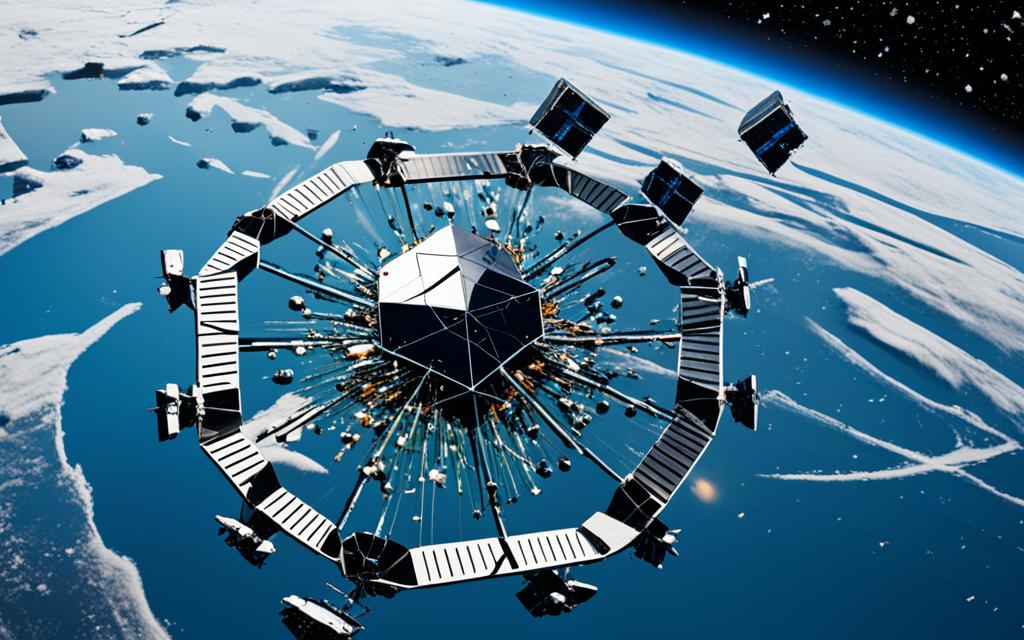
NASA’s Efforts to Mitigate Orbital Debris Risks
The National Aeronautics and Space Administration (NASA) is committed to mitigating the risks posed by orbital debris and ensuring the long-term sustainability of satellite networks. With a compliance rate of approximately 96% for end-of-mission disposal within 25 years, NASA has shown its dedication to responsible space practices over the last decade.
However, the global compliance rate for orbital debris mitigation remains significantly lower, averaging between 20 to 30%. This highlights the need for collective efforts to address the growing challenge of space debris and protect the integrity of satellite networks.
NASA recognizes the importance of ongoing research and development to tackle debris removal technologies. While progress in this area has been limited, NASA remains committed to advancing solutions to actively remove existing debris from Earth’s orbit and prevent further accumulation.
One of the primary challenges NASA faces in mitigating orbital debris risks is data collection and sharing. Accurate and comprehensive data is crucial for evaluating the effectiveness of mitigation strategies and enforcing regulations. By fostering collaborative partnerships and information exchange, NASA strives to enhance its understanding of the debris environment and refine its mitigation efforts.
Improvements are needed to strengthen NASA’s orbital debris mitigation measures and overcome the existing challenges in data collection, evaluation, and enforcement. Through continued research, collaboration, and adherence to global standards, NASA aims to manage orbital debris effectively and ensure a sustainable space environment for future generations.
“The biggest challenge is the increasing number of satellites contributing to the debris environment, coupled with the limited capacity for undisrupted launching of satellites with end-of-life plans,” said Dr. Dwayne Crawford, a leading expert in space debris mitigation.
Evaluating and Mitigating the Effects of Large Satellite Constellations
The deployment of large satellite constellations has the potential to have significant environmental and other effects that require careful evaluation and mitigation. These effects include an increase in orbital debris, emissions into the upper atmosphere, and disruption of astronomy. It is crucial to address these challenges to ensure the long-term sustainability of satellite networks and the space environment as a whole.
To effectively mitigate the potential effects of large satellite constellations, policymakers can consider several policy options:
- Building knowledge and developing technologies: Investing in research and development to understand the impact of large satellite constellations and develop innovative solutions. This includes advancements in debris mitigation, propulsion systems, and satellite design.
- Improving data sharing: Enhancing international collaboration and data sharing among space agencies, satellite operators, and research institutions to improve our understanding of orbital dynamics, debris tracking, and collision avoidance.
- Establishing standards and regulations: Implementing global standards and regulations to ensure responsible satellite deployment, end-of-life disposal, and orbital debris mitigation. These standards should include guidelines on satellite end-of-life procedures, such as deorbiting or reentry.
- Enhancing organization and leadership: Strengthening international organizations, such as the United Nations Office for Outer Space Affairs (UNOOSA), to facilitate coordination, information exchange, and governance in addressing the potential effects of large satellite constellations.
By considering the interrelationships among these policy options, policymakers can effectively navigate the complex landscape of large satellite constellations and mitigate their potential effects. It is crucial to strike a balance between the benefits of expanded global connectivity and the need to preserve the space environment for future generations.
The Importance of International Collaboration
Addressing the potential effects of large satellite constellations requires collaborative efforts on an international scale. The scale and scope of the challenges involved necessitate cooperation among space agencies, governments, industry stakeholders, and the scientific community.
International collaboration enables the sharing of knowledge, resources, and best practices, ultimately leading to more effective mitigation strategies. Organizations such as the International Astronomical Union (IAU) and the International Telecommunication Union (ITU) play a crucial role in facilitating this collaboration, setting standards, and promoting responsible space activities.
The Need for Collaborative International Efforts
Mitigating the impact of space debris on satellite networks requires collaboration on an international scale. While the European Space Agency (ESA) has been leading the way in implementing space debris mitigation measures, it is clear that individual agency efforts are insufficient in addressing this global challenge. To effectively tackle the issue, international organizations have stepped in, providing guidelines and standards for space debris mitigation.
One such organization is the Inter-Agency Debris Coordination Committee (IADC), which brings together space agencies from around the world to promote cooperation and coordination in mitigating the risks posed by space debris. Through information sharing, exchange of best practices, and joint research efforts, the IADC aims to enhance the effectiveness of space debris mitigation strategies.
Additionally, the International Organization for Standardization (ISO) has developed global standards for space debris mitigation. These standards encompass various aspects such as debris monitoring and tracking, satellite design for end-of-life disposal, and mitigation procedures for satellite operators. By adopting these global standards, the international community can ensure a level playing field and safe access to space for all stakeholders.
The Role of Collaboration
Collaboration is key to addressing the multifaceted challenges posed by space debris. Space agencies, governments, industry stakeholders, and scientific communities must unite their efforts to develop effective mitigation strategies and ensure the long-term sustainability of satellite networks.
“The scale of the space debris problem demands a coordinated and collaborative response. By working together, we can pool our expertise, resources, and technologies to find innovative solutions and minimize the risks to our space infrastructure.”
– Dr. Lisa Callahan, Vice President and General Manager of Commercial Civil Space at Lockheed Martin
Through collaborative international efforts, it becomes possible to pool resources, share data, and leverage collective expertise. This cooperation allows for the development of comprehensive space debris mitigation plans that encompass debris removal, orbital clearance, collision avoidance, and responsible satellite disposal.
In addition to the technical aspects, international collaboration fosters the formulation of policies and regulations that encourage responsible space practices. By establishing a framework of global standards, countries and organizations can ensure consistency in their approach to space debris mitigation and prevent the creation of new debris.
The Benefits of International Collaboration
The benefits of international collaboration in space debris mitigation are far-reaching. By working together, stakeholders can:
- Enhance data sharing and information transparency for more accurate tracking and monitoring of space debris
- Pool resources for the development and deployment of advanced technologies and techniques for debris removal
- Promote responsible satellite design and disposal practices to minimize the future generation of space debris
- Coordinate efforts in space traffic management and collision avoidance to minimize the risk of in-orbit collisions
- Foster dialogue and cooperation among nations, promoting peaceful and sustainable use of outer space
By embracing international collaboration and adhering to global standards, the space community can effectively address the challenges posed by space debris and ensure the long-term viability of satellite networks.
Conclusion
Mitigating the impact of space debris on satellite networks is of utmost importance for ensuring orbital sustainability. The efforts undertaken by esteemed organizations like the European Space Agency (ESA) and the National Aeronautics and Space Administration (NASA) are crucial in developing and implementing effective mitigation strategies.
Through the adoption of stricter guidelines, improved disposal strategies, and investments in advanced technologies for debris removal, the risks posed by space debris can be significantly minimized. However, achieving a zero debris future requires the collective efforts of policymakers, industry stakeholders, and the scientific community.
Collaboration among international space agencies, governments, and all relevant parties, both at regional and global levels, is indispensable. The development and adherence to global standards, such as those established by the Inter-Agency Debris Coordination Committee (IADC) and the International Organization for Standardization (ISO), play a critical role in ensuring a sustainable space environment and guaranteeing the uninterrupted functionality of satellite networks.
By working together to address the challenges posed by space debris, we can maintain orbital sustainability and pave the way for continued advancements in space-based applications, scientific research, and the ever-expanding realm of satellite-enabled services.
FAQ
What is space debris?
Space debris refers to the collection of defunct satellites, spent rocket stages, and other fragments that are left in Earth’s orbit. These objects pose a significant risk to satellite networks and space operations.
How does space debris impact satellite networks?
Space debris poses a threat to satellite networks by increasing the risk of collisions. These collisions can damage or destroy satellites, leading to disruptions in crucial services such as telecommunications, weather forecasting, and navigation systems.
What are the current strategies for mitigating space debris?
The current strategies for mitigating space debris include ensuring proper disposal of space objects, improving orbital clearance, implementing collision avoidance techniques, preventing intentional release of debris, and improving satellite health monitoring.
How is NASA addressing the risks of orbital debris?
NASA has been actively working to mitigate the risks of orbital debris by improving compliance rates for end-of-mission disposal, researching technologies for debris removal, and collaborating with international organizations to develop guidelines and standards.
How are the effects of large satellite constellations being evaluated and mitigated?
The effects of large satellite constellations, such as increased debris and disruption of astronomy, are being evaluated and mitigated through building knowledge and technologies, improving data sharing, establishing standards and regulations, and enhancing organization and leadership.
Why is collaborative international effort important in space debris mitigation?
Collaborative international efforts are crucial in space debris mitigation to ensure a level playing field, safe access to space, and the development and adoption of global standards. Space agencies, governments, industry stakeholders, and the scientific community need to work together to address the challenges posed by space debris.
Why is it important to mitigate the impact of space debris on satellite networks?
Mitigating the impact of space debris is important to maintain orbital sustainability and the uninterrupted functionality of satellite networks. Failure to do so can lead to disruptions in crucial services, potential damage or loss of satellites, and the long-term sustainability of space-based applications.



